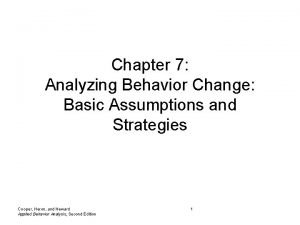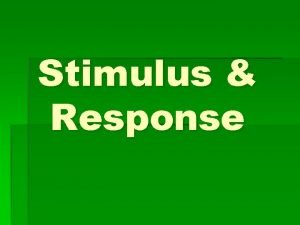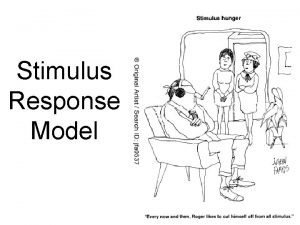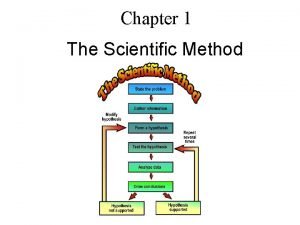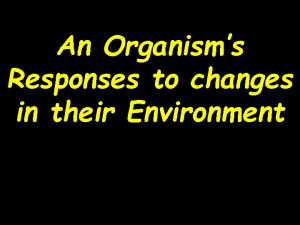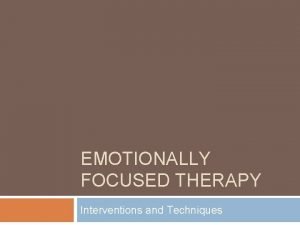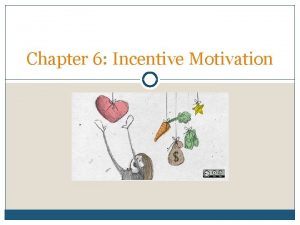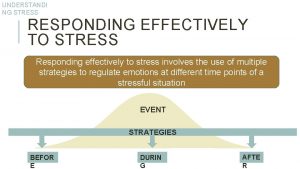Effectively Responding to CMHS State Incentive Transformation Grants




















- Slides: 20

Effectively Responding to CMHS State Incentive Transformation Grants: Making Criminal Justice a Priority Henry J. Steadman, Ph. D. Michael Hogan, Ph. D. March 16, 2005

CMHS SITG: Pre-Application TA n Frequently Asked Questions q n Conference Calls q n March 31; April 7, April 21; April 28; May 5 Talk to a Live Person q n mhtsig@samhsa. hhs. gov Dr. Nancy Davis (240) 276 -1866 For more information: q www. samhsa. gov/Matrix/MHST_TA. aspx

“The Commission recommends widely adopting adult criminal justice and juvenile justice diversion and re-entry strategies to avoid the unnecessary criminalization and extended incarceration of non-violent adult and juvenile offenders with mental illness. ” The President’s New Freedom Commission on Mental Health, July 2003 (p. 43)

“Federal programs and State mental health authorities must capitalize on the many opportunities that already exist for financing core services for people with mental illnesses in contact with the criminal justice system. ” New Freedom Commission on Mental Health Subcommittee on Criminal Justice, June 2004 (p. 6)

Three Major Responses are Needed: n “Diversion programs to keep people with serious mental illnesses who do not need to be in the criminal justice system out of it. ” n “Institutional services to provide constitutionally adequate services in correctional facilities…” n “Reentry transition programs to link people… with illnesses to community-based services…” New Freedom Commission on Mental Health Subcommittee on Criminal Justice, June 2004 (p. 6)

Why prioritize MH-CJ Initiative in your SIG Application?

Without prioritized attention to individuals who cycle repeatedly through mental health, substance abuse and criminal justice systems true system transformation is impossible.

Across these three systems, professionals find themselves working with the same clients in a recurring cycle of contact.

Without better integration and coordination at all levels of governance of mental health programs for persons with mental illness in contact with the justice system, little progress can be expected in these times of severe resource shortfalls.



Identify Key Suspects to Involve Suspects often not included: Usual suspects: n. State SA Commissioners n State MH Commissioners n. Local MH Commissioners n DOCS n. Forensic Directors n Parole n. Judiciary n Probation n. State Medicaid Director n Sheriff/police officials n. Homeless/Housing n Commission on Corrections Authorities n. Public Health Officials n. Consumer Organizations n. Family Organizations n. Public Defense Bar n. Prosecutors

Over past 10 years as a technical assistance and resource center, GAINS has worked with more than 400 jurisdictions across all 50 states, produced more than 45 publications and 6 training curricula and distributed more than 250, 000 publications to assist counties and states to address the specific service needs of justice-involved individuals with co-occurring disorders.

GAINS EBP Center TA n n n Call Center at 800. 311. GAIN for publications, program examples, etc. when writing SIG application Solicitation in summer 2005 for targeted TA for 3 states awarded SIG’s Include GAINS in State strategic planning budget to assist in developing mental health —criminal justice initiatives

Center for Women, Violence, and Trauma Coordinating center/information clearing house funded by SAMHSA CMHS n Highlights the role of violence and trauma in the lives of people with behavioral health disorders. n Contact: Andrea Blanch, Ph. D. , Director (941) 349 -8213 http: //www. mentalhealth. samhsa. gov/cmhs/womenand trauma/default. asp n

An End to Criminalization? Transforming the Mental Health/ Criminal Justice Systems Ohio’s Experience: A Work in Progress Mike Hogan, Ph. D. Director, Ohio DMH

One Snapshot of status/progress Does not include all efforts, e. g. : • CIT officers/ teams (1000 trained) • Reentry efforts • Linkage program -

Ohio’s Experience n Critical background factors: q q q n Strong stable leadership in MH and Correction agencies, transformational leadership (Supreme Court Justice Evelyn Lundberg Stratton), elected leadership (e. g. Sen. Mike De. Wine, Reps. Ted Strickland, Rob Portman) Good Forensic Services infrastructure Strong NAMI Developmental steps: q q Deep collaboration in reforming prison mental health care Diversion pilot projects funded by ODMH Creation of MH/CJ Center of Excellence, GAINS TA Supreme Court Committee on Mentally Ill in CJ system

Ohio’s Experience n Critical Success Factors q q Collaborative Leadership Long term commitment Starting with a decent infrastructure Use of “sequential intercepts” diversion model with support by national leaders, e. g. n n q GAINS Center Sam Cochran Trying many different good things: n n Process leadership (local committees) A few good models (CIT, MH Courts) Having TA available (Centers of Excellence: MH/CJ, SAMI) Small pilot projects that capitalize on local energy/commitment

For Information on the National CIT Conference (Columbus, Ohio: May 11 -12, 2005) http: //www. law. capital. edu/micj/email. htm
 Uconn education abroad
Uconn education abroad Behavioral variability aba
Behavioral variability aba Manipulated variable and responding variable graph
Manipulated variable and responding variable graph Understanding behaviour responding safely
Understanding behaviour responding safely Responding to internal stimuli
Responding to internal stimuli Stimuli model
Stimuli model Night chapter 5 discussion questions
Night chapter 5 discussion questions What is a responding variable
What is a responding variable Example of psychomotor domain
Example of psychomotor domain An indirect, dishonest way to control or influence others
An indirect, dishonest way to control or influence others Why are line graphs powerful tools in science?
Why are line graphs powerful tools in science? _____ is done with the first responding officer.
_____ is done with the first responding officer. Congratulations dialogue example
Congratulations dialogue example The fourth step in the scientific method is
The fourth step in the scientific method is Marketing environment case study
Marketing environment case study Responding to internal stimuli
Responding to internal stimuli Responding to the environment
Responding to the environment He understands the instructions given by the agent
He understands the instructions given by the agent Active constructive responding
Active constructive responding Evocative responding
Evocative responding Staff fear and anxiety cpi
Staff fear and anxiety cpi

